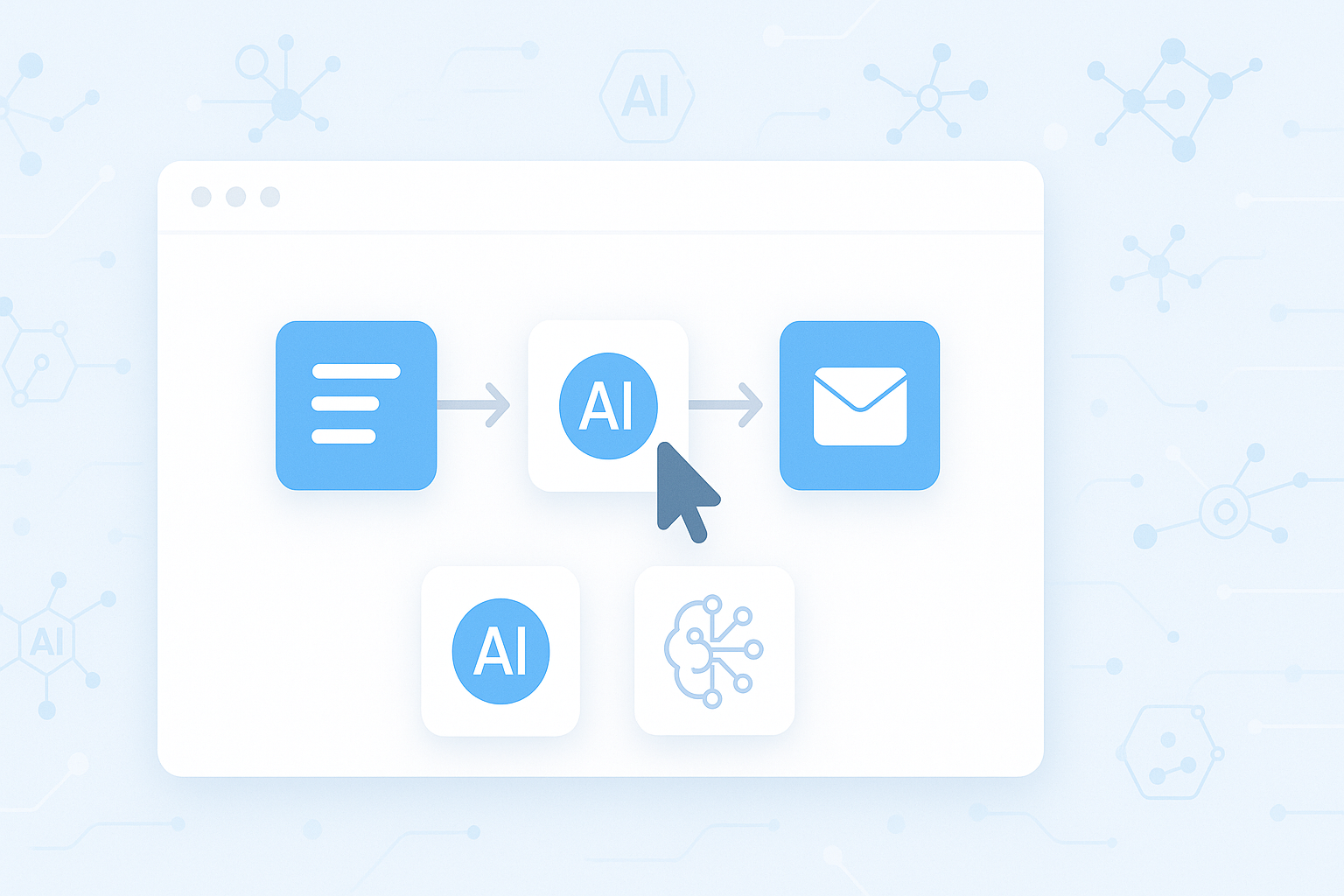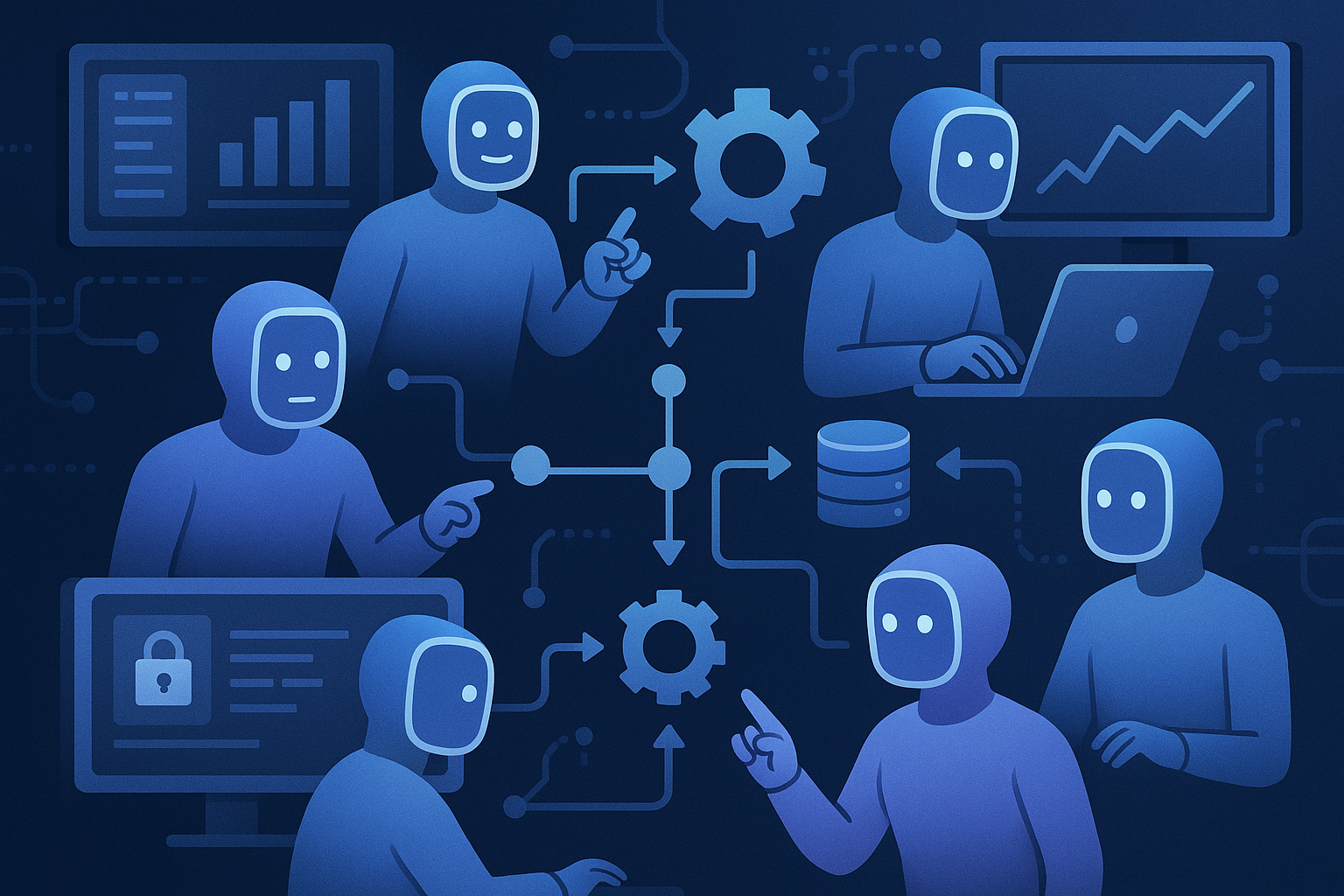How SMBs Are Using AI Automation to Scale Smarter in 2025

Across the U.S., small and midsize businesses (SMBs) are scaling smarter in 2025 — not by working harder, but by working more intelligently. In cities like New York, Austin, and Miami, where competition is fierce and resources are limited, AI automation has emerged as the quiet engine driving growth.
Far from hype, AI is a practical toolkit that helps small teams save time, reduce costs, and act on better data. Whether it’s streamlining customer support, drafting marketing copy, or managing financial tasks, AI gives lean companies an edge once reserved for enterprises.
At Singular Innovation, we work with startups and SMBs to implement automation that fits your business reality — starting with one high-value workflow, piloting it, measuring real-world results, and scaling what works.
Let’s explore how you can make AI work for you in 2025.
The Challenge: Time, Complexity, and Limited Capacity

Running a small business often means juggling every role — from CEO to marketer to accountant. This reality is common in urban growth hubs like Los Angeles, Atlanta, and Denver, where speed matters and teams stay lean.
The problem? Each of these roles comes with repetitive, time-consuming tasks. Think data entry, invoice matching, customer inquiries, sales follow-ups — all necessary, but not strategic. These tasks dilute focus and slow down progress.
Without automation, many SMBs hit a ceiling: they can’t scale without adding headcount or burning out existing staff.
AI changes that.
By automating the “busywork,” SMBs can redirect their team’s energy toward strategy, customer relationships, and innovation — the things that truly move the needle.
Why AI Automation Is Essential for SMBs in 2025
Workflow Automation for Everyday Tasks
AI excels at rules-based, repetitive work. In 2025, this includes:
- Routing support tickets
- Classifying expenses
- Logging CRM updates
- Sorting incoming leads
- Scheduling follow-up emails
Tools like Zapier, Make, and HubSpot AI allow small teams to automate these workflows with minimal technical setup.
A local services company in Miami reduced customer wait times by 40% simply by using AI to triage inbound requests and auto-fill support forms.
Decision Intelligence for Smarter Moves
AI helps transform messy data into meaningful insights. Platforms like Zoho Analytics, Microsoft Copilot, and ClickUp AI can analyze trends, forecast demand, and flag anomalies — all in real time.
In 2023, IDC reported that companies using AI-driven decision tools saw up to a 30% increase in operational efficiency (source).
Whether it’s predicting inventory needs in Dallas or flagging sales drop-offs in Brooklyn, AI empowers faster, more confident decision-making.
Creative & Customer Support Automation
AI tools now assist with:
- Writing product descriptions
- Generating email copy variants
- Summarizing customer reviews
- Drafting social posts
Marketing teams use Jasper or Notion AI to create content at scale, while AI chatbots powered by tools like Tidio or Freshchat handle FAQs 24/7.
But AI doesn’t replace human creativity — it clears the runway so your team can focus on refining, not starting from scratch.
Real AI Use Cases from SMBs Across U.S. Cities

Across the country, SMBs are already putting AI automation to work. Here are just a few examples from key U.S. markets:
- New York City: A creative agency uses AI to automatically summarize sales calls and log insights into its CRM, reducing admin time by 60%.
- Austin: A retail startup forecasts product demand by day of the week using AI models, improving inventory accuracy and reducing waste by 25%.
- Los Angeles: A fashion eCommerce brand leverages AI copywriting tools to draft five ad variants in minutes, increasing A/B testing output by 4x.
- Miami: A bike repair shop deployed a chatbot to answer common customer queries, cutting response times in half and freeing staff to focus on repairs.
- Denver: A SaaS sales team uses AI to draft follow-ups that match customer tone and context, increasing reply rates by 18%.
These aren’t hypothetical. They’re proof that with clean data and the right tools, small teams can unlock serious efficiencies — without enterprise budgets or tech teams.
How to Get Started: A Pilot-First Approach
Step 1 — Choose a High-Impact Workflow
Start with one process that’s both repetitive and revenue-adjacent. Good candidates include:
- Customer support response routing
- Marketing copy generation
- Invoice categorization
- CRM lead qualification
The goal? Quick wins with measurable results.
Step 2 — Prep Your Data
No matter how smart the AI is, dirty data = bad output.
- Consolidate records (no more scattered spreadsheets)
- Remove duplicates
- Fill in missing fields
- Ensure compliance with privacy and consent laws
🛡️ Tip: Use tools like OpenRefine or native CRM clean-up functions before launching any AI initiative.
Step 3 — Run a 2-4 Week Pilot
Define success clearly:
- Reduce task time by 30%
- Improve accuracy by 20%
- Cut costs per task
Involve a human in the loop for quality control. Use a simple spreadsheet to track time saved, error rates, and total cost of execution.
Once results stabilize, scale that workflow.
Responsible AI Use & Governance for SMBs
AI can be a game-changer — but only if deployed responsibly. Here’s what to consider:
- Privacy: Don’t feed sensitive customer data into public models (e.g., ChatGPT) without consent.
- Transparency: Let users know when they’re engaging with a bot.
- Bias & hallucination: Review outputs regularly and train your AI to avoid recurring content errors.
- Human oversight: AI should suggest, not act unchecked.
Document your internal AI use policies. Reference frameworks like OECD AI Principles or the NIST AI Risk Framework.
Conclusion: AI as a Force Multiplier for Small Teams
AI isn’t the future for SMBs — it’s the present advantage hiding inside the tools you're already using.
When used strategically, it doesn’t just cut costs or save time — it changes how your team thinks, moves, and grows. Whether it’s drafting faster, responding quicker, or making smarter decisions, AI helps small businesses punch above their weight.
The key isn’t to automate everything. It’s to automate the right things — those that give your team more time to focus on customers, strategy, and creativity.
So ask yourself:
- What’s one process we repeat daily that’s slowing us down?
- What would happen if we piloted AI on just that task?
- Are we ready to scale smarter — without hiring faster?
If the answer is yes…
👉 Book a Free AI Audit & Strategy Session with Singular Innovation
Let’s identify your biggest automation opportunity and map a low-risk pilot that delivers fast, measurable impact.
This article was developed with the assistance of AI tools (e.g., huminize.io) and reviewed by the Singular Innovation team for accuracy and context.
Heading
Dolor enim eu tortor urna sed duis nulla. Aliquam vestibulum, nulla odio nisl vitae. In aliquet pellentesque aenean hac vestibulum turpis mi bibendum diam. Tempor integer aliquam in vitae malesuada fringilla.
Mi tincidunt elit, id quisque ligula ac diam, amet. Vel etiam suspendisse morbi eleifend faucibus eget vestibulum felis. Dictum quis montes, sit sit. Tellus aliquam enim urna, etiam. Mauris posuere vulputate arcu amet, vitae nisi, tellus tincidunt. At feugiat sapien varius id.
Heading 3
Eget quis mi enim, leo lacinia pharetra, semper. Eget in volutpat mollis at volutpat lectus velit, sed auctor. Porttitor fames arcu quis fusce augue enim. Quis at habitant diam at. Suscipit tristique risus, at donec. In turpis vel et quam imperdiet. Ipsum molestie aliquet sodales id est ac volutpat.
Tristique odio senectus nam posuere ornare leo metus, ultricies. Blandit duis ultricies vulputate morbi feugiat cras placerat elit. Aliquam tellus lorem sed ac. Montes, sed mattis pellentesque suscipit accumsan. Cursus viverra aenean magna risus elementum faucibus molestie pellentesque. Arcu ultricies sed mauris vestibulum.
Heading 4
Morbi sed imperdiet in ipsum, adipiscing elit dui lectus. Tellus id scelerisque est ultricies ultricies. Duis est sit sed leo nisl, blandit elit sagittis. Quisque tristique consequat quam sed. Nisl at scelerisque amet nulla purus habitasse.

Heading 5
Morbi sed imperdiet in ipsum, adipiscing elit dui lectus. Tellus id scelerisque est ultricies ultricies. Duis est sit sed leo nisl, blandit elit sagittis. Quisque tristique consequat quam sed. Nisl at scelerisque amet nulla purus habitasse.
"Ipsum sit mattis nulla quam nulla. Gravida id gravida ac enim mauris id. Non pellentesque congue eget consectetur turpis. Sapien, dictum molestie sem tempor. Diam elit, orci, tincidunt aenean tempus."
Heading 6
Nunc sed faucibus bibendum feugiat sed interdum. Ipsum egestas condimentum mi massa. In tincidunt pharetra consectetur sed duis facilisis metus. Etiam egestas in nec sed et. Quis lobortis at sit dictum eget nibh tortor commodo cursus.
What is Singular Innovation
Lorem ipsum dolor sit amet, consectetur adipiscing elit. Suspendisse varius enim in eros elementum tristique.






